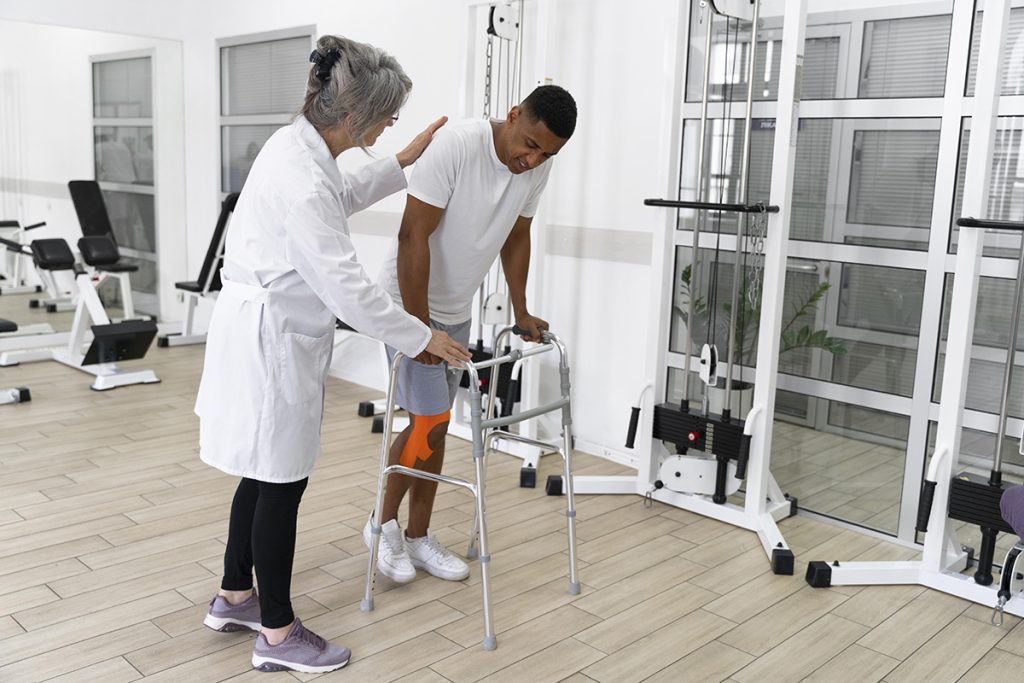also known as physical therapy, is a healthcare profession that focuses on the assessment, diagnosis, treatment, and prevention of movement disorders and physical disabilities. Physiotherapists are trained to help patients restore, maintain, and improve their physical function and mobility through a variety of treatments and exercises. Here’s a detailed overview of physiotherapy, common diagnostic procedures, and tips on how to stay healthy:
A physiotherapist is a healthcare professional who:
- Assesses Physical Conditions: Evaluates patients’ physical function, mobility, strength, and pain levels.
- Diagnoses Movement Disorders: Identifies problems related to movement, posture, and physical function.
- Develops Treatment Plans: Creates individualized treatment plans to address specific physical issues and goals.
- Provides Rehabilitation: Offers therapy to recover from injuries, surgeries, and illnesses.
- Prevents Physical Problems: Works on preventing injuries and managing chronic conditions to improve quality of life.

Diagnostic Procedures
- Physical Examination:
- Observation: Physiotherapists observe patients’ posture, gait, and movement patterns to identify abnormalities.
- Palpation: They use their hands to feel muscles, joints, and other tissues to detect any issues.
- Range of Motion (ROM) Tests: These tests measure how far a joint can move in different directions.
- Strength Testing: Assess the strength of muscles using manual resistance or specialized equipment.
- Functional Tests: Evaluate the patient’s ability to perform specific tasks or activities.
- Medical History:
- Patient Interview: Discuss the patient’s medical history, symptoms, lifestyle, and any previous injuries or surgeries to understand the context of their physical issues.
- Diagnostic Imaging (in collaboration with other healthcare providers):
- X-rays: Used to visualize bone structures and detect fractures or degenerative changes.
- MRI and CT Scans: Provide detailed images of soft tissues, including muscles, ligaments, and intervertebral discs.
- Ultrasound: Used to assess soft tissue injuries and guide certain treatments, such as injections.
- Electromyography (EMG):
- Purpose: Measures electrical activity of muscles to diagnose nerve and muscle disorders.
- Procedure: Involves inserting a needle electrode into a muscle to record electrical activity.
Common Treatments in Physiotherapy
- Exercise Therapy:
- Strengthening Exercises: Improve muscle strength and endurance.
- Stretching Exercises: Enhance flexibility and range of motion.
- Aerobic Exercises: Improve cardiovascular fitness.
- Balance and Coordination Exercises: Enhance stability and coordination.
- Manual Therapy:
- Massage: Relieves muscle tension and improves circulation.
- Joint Mobilization and Manipulation: Restores joint movement and alleviates pain.
- Electrotherapy:
- Transcutaneous Electrical Nerve Stimulation (TENS): Uses electrical currents to relieve pain.
- Ultrasound Therapy: Uses sound waves to promote tissue healing.
- Hydrotherapy:
- Aquatic Exercises: Performed in water to reduce the stress on joints while improving strength and mobility.
- Heat and Cold Therapy:
- Cryotherapy: Uses cold packs to reduce inflammation and pain.
- Thermotherapy: Uses heat packs to relax muscles and improve blood flow.
- Education and Advice:
- Ergonomic Advice: Guidance on posture, workspace setup, and body mechanics to prevent injury.
- Lifestyle Modifications: Recommendations for activities and habits to support physical health.
Tips for keeping your Child Health
Regular Physical Activity: Engage in regular exercise, including cardiovascular, strength, flexibility, and balance training.
Proper Ergonomics: Maintain good posture and use ergonomic furniture and tools, especially if you have a desk job.
Healthy Weight: Maintain a healthy weight to reduce the strain on your muscles and joints.
Adequate Sleep: Ensure you get enough rest to allow your body to recover and function optimally.
Hydration: Drink plenty of water to keep your tissues hydrated and support overall health.
Balanced Diet: Eat a nutritious diet rich in vitamins and minerals to support muscle and bone health.
Avoid Prolonged Sitting: Take breaks to stand, stretch, and move around, especially if you have a sedentary job.
Safe Lifting Techniques: Use proper techniques to avoid back injuries, such as lifting with your legs, not your back.
Regular Check-Ups: Visit your healthcare provider for regular check-ups to monitor and manage any potential health issues.
Stress Management: Practice stress-reducing activities such as yoga, meditation, or deep breathing exercises to support mental and physical health.


